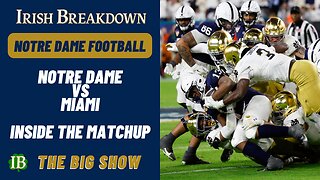Premium Only Content

Biofield-Dark Journalist-RAMTHA & Project Camelot Secret Disclosure(s)
https://pmc.ncbi.nlm.nih.gov/articles/PMC6071615/
the conscious ability to induce goosebumps—whose physiological study, to our knowledge, is confined to three single-individual case studies. Very little is known about the physiological nature and emotional correlates of this ability. The current manuscript assesses physiological, emotional, and personality phenomena associated with VGP in a sample of thirty-two individuals. Physiological descriptions obtained from the sample are consistent with previous reports, including stereotypical patterns of sensation and action. Most participants also reported that their VGP accompanies psychological states associated with affective states (e.g., awe) and experience (e.g., listening to music), and higher than typical openness to new experiences. These preliminary findings suggest that this rare and unusual physiological ability interacts with emotional and personality factors, and thus merits further study.
Keywords: Voluntary piloerection, Emotion, Personality, Openness to experience, Absorption, Autonomic physiology, Psychophyisology
Introduction
“Certainly that heart is steel-framed which, in spite of one’s chanting the holy name of the Lord with concentration, does not change when ecstasy takes place, tears fill the eyes and the hairs stand on end.”
Bhãgavata Purãna, 2.3.24, 800-1000AD (Bhaktivedanta VedaBase, 2018).
The study of exceptional individuals is central to the history of human neuroscience. Famous case studies include patients with specific neurological insults, such as naturally occurring lesions (e.g., Louis Leborgne; Broca, 1861), victims of crimes or accidents (e.g., Phineas Gage; Harlow, 1848), or patients receiving neurosurgery (e.g., Henry Melaison; Corkin, 1984).
-
 LIVE
LIVE
Simply Bitcoin
2 hours agoINSIDER CONFIRMS 1M Bitcoin Buy INCOMING!! | EP 1319
5,685 watching -
 LIVE
LIVE
StoneMountain64
45 minutes agoHUNTING FOR THE FIRST WIN BACK ON WARZONE
523 watching -
 LIVE
LIVE
Sean Unpaved
1 hour agoCFB Deep Dive: Matt Moscona's Expert Takes on the Gridiron
862 watching -
 27:39
27:39
Crypto.com
1 day ago2025 Live AMA with Kris Marszalek, Co-Founder & CEO of Crypto.com
81.2K4 -
 1:00:05
1:00:05
Timcast
1 hour agoMASS SHOOTING At Catholic Church In Minneapolis, Children Reportedly Targeted
48.4K53 -
 1:34:01
1:34:01
Tucker Carlson
27 minutes agoChristopher Caldwell: Is It Too Late to Save the English-Speaking World?
1 -
 2:14:40
2:14:40
Steven Crowder
4 hours agoBreaking: Minneapolis Catholic Church Shooting Live Coverage
222K257 -
 LIVE
LIVE
Major League Fishing
5 days agoLIVE! - Fishing Clash Team Series: Challenge Cup - Day 4
300 watching -
 LIVE
LIVE
Neil McCoy-Ward
1 hour agoFURY As JD Vance Unleashes HELL On The UK & EU… (What We Know So Far)
147 watching -
 LIVE
LIVE
IrishBreakdown
1 hour agoNotre Dame vs Miami Preview - Inside the Matchup
13 watching